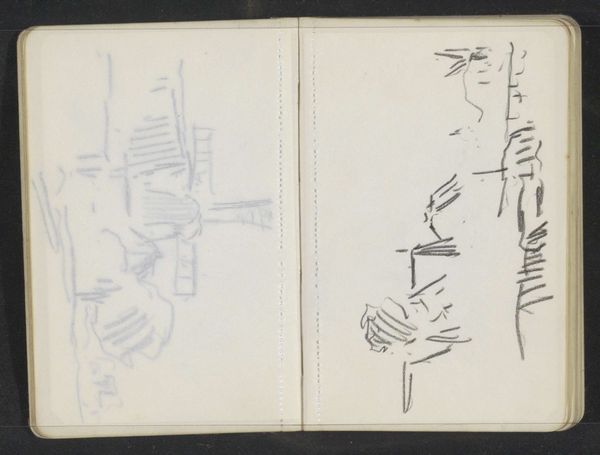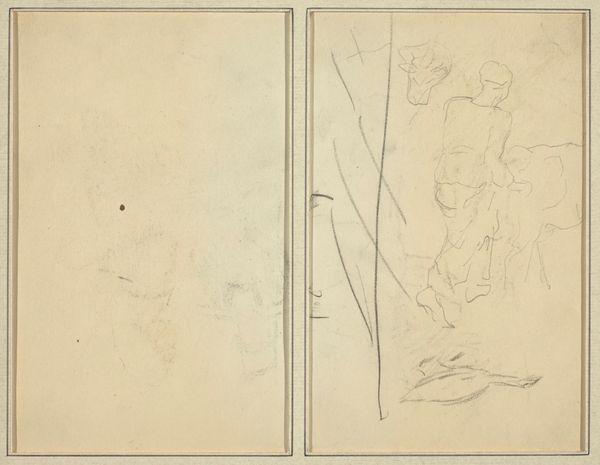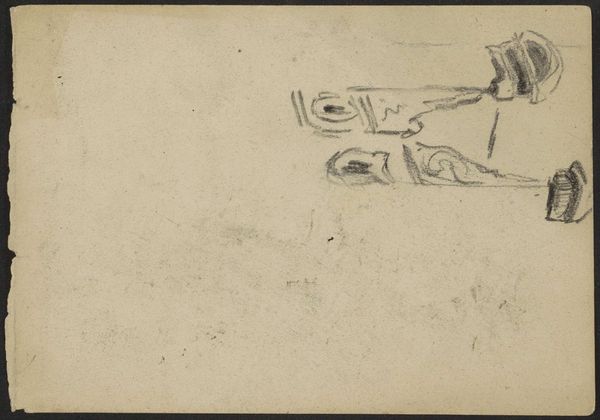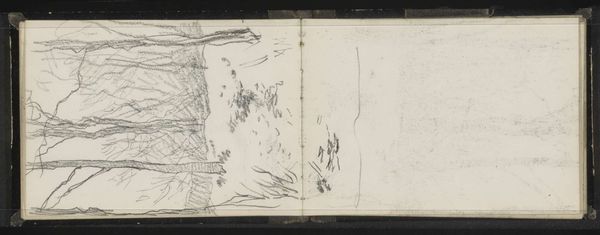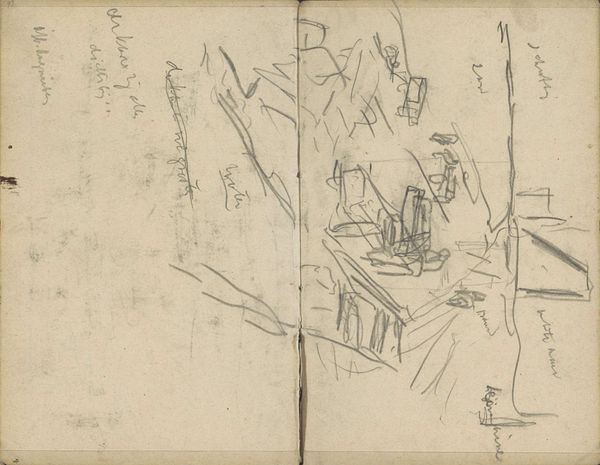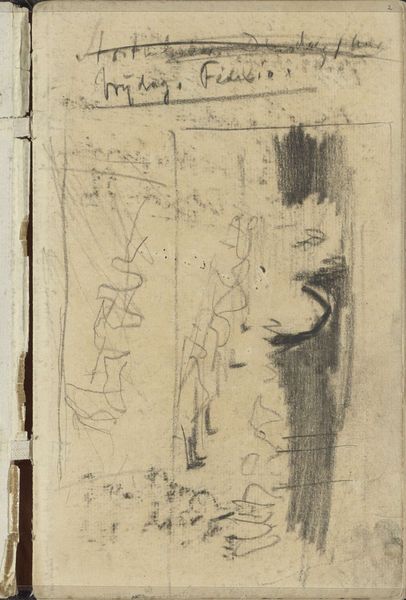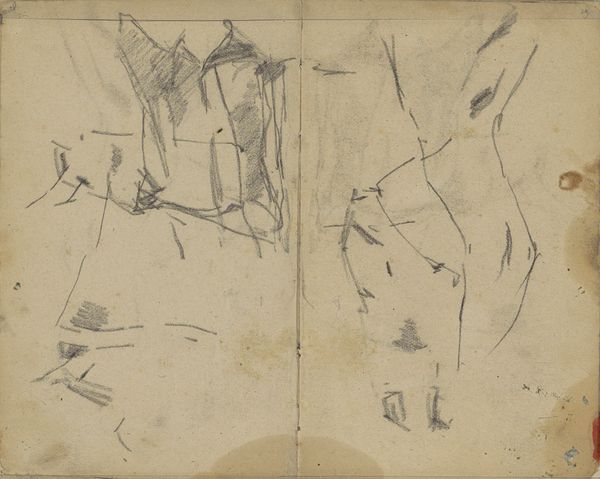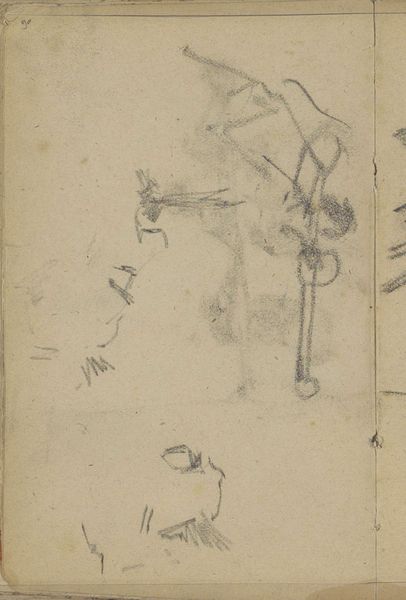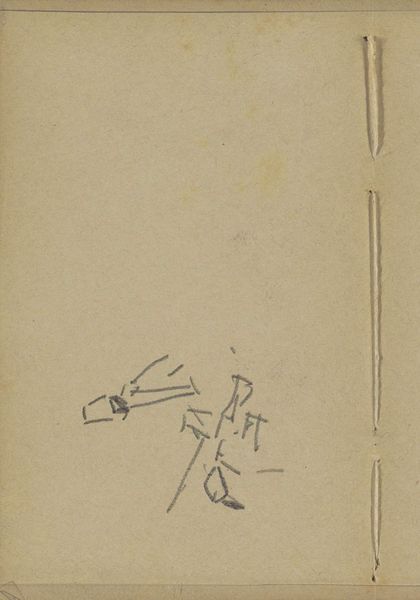![Soldiers felling sapling, and weaving saplings into baskets [verso] by Winslow Homer](/_next/image?url=https%3A%2F%2Fd2w8kbdekdi1gv.cloudfront.net%2FeyJidWNrZXQiOiAiYXJ0ZXJhLWltYWdlcy1idWNrZXQiLCAia2V5IjogImFydHdvcmtzLzI1YTg0OTA5LTVmYTMtNDdmZC1hN2ViLTY0ZjI4Mjk1MDljNy8yNWE4NDkwOS01ZmEzLTQ3ZmQtYTdlYi02NGYyODI5NTA5YzdfZnVsbC5qcGciLCAiZWRpdHMiOiB7InJlc2l6ZSI6IHsid2lkdGgiOiAxOTIwLCAiaGVpZ2h0IjogMTkyMCwgImZpdCI6ICJpbnNpZGUifX19&w=3840&q=75)
Soldiers felling sapling, and weaving saplings into baskets [verso] 1862
0:00
0:00
drawing, pencil
#
drawing
#
pencil sketch
#
landscape
#
figuration
#
pencil
#
sketchbook drawing
Dimensions: sheet: 21.9 × 37.7 cm (8 5/8 × 14 13/16 in.)
Copyright: National Gallery of Art: CC0 1.0
Curator: This drawing by Winslow Homer, made in 1862, shows soldiers engaged in seemingly mundane tasks: cutting saplings and weaving baskets. The very material – pencil on paper – points to a kind of immediacy, doesn’t it? What stands out to you about it? Editor: The simplicity of the lines, how basic and raw they seem, given that Homer made this during the Civil War, showing men constructing things rather than, say, fighting. What can you tell me about his materials choices? Curator: Consider the labor involved, the tangible effort. Homer used readily available, inexpensive materials. This contrasts sharply with the grand oil paintings of battles typically associated with war art. Pencil and paper facilitated the quick capturing of scenes, becoming tools to record the lives and work of these soldiers. We can examine how labor manifests itself as subject and process within Homer's visual vocabulary. Notice the specific activities captured -- felling saplings and basket weaving -- How do they point towards larger needs? Editor: It does make you consider what they are making the baskets for – supplies, transport maybe? Is it possible to see these common activities during wartime as their contribution, and not separate from fighting? Curator: Precisely. Think of it as a disruption to traditional art hierarchies. It elevates everyday labor to the realm of artistic subject matter. These tasks sustained the army and were integral to the war effort. The act of depicting them challenges conventional portrayals of war focusing on the heroism of battles. We should see it not merely as a scene of war but a view into the lives and labor of the men within. What connections might be made with other sketches in Homer's oeuvre? Editor: I see your point; examining this piece as a record of wartime work, seen in the choice of materials. Now that’s something I will definitely keep in mind. Curator: Absolutely! And remember that materials themselves are never neutral; they carry histories and contexts that shape the art we see.
Comments
No comments
Be the first to comment and join the conversation on the ultimate creative platform.

